Set foot in an emblematic region of Occitanie with our selection of the best must-sees in Carcassonne!
Occupied since ancient times, the town of Carcassonne and its urban area play an important role in the foundation of our country. Its fortified city defended the border between France and Aragon until the Treaty of the Pyrenees in 1659.
Nowadays, Carcassonne and its medieval city attract attention from all over the world. Standing as the symbol of Occitanie and the Aude department, its magnificent and diverse region, its almost Mediterranean climate and, of course, its historic heritage are to die for. To give you a better idea of the region, we’ve put together a selection of the must-sees in Carcassonne!
The city of Carcassonne
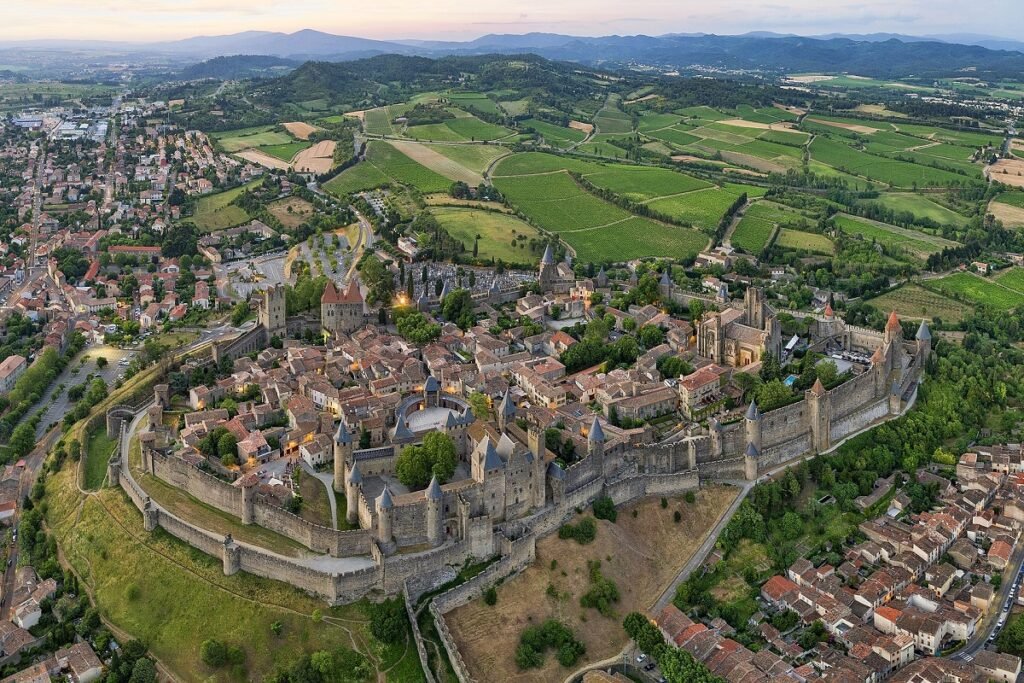
Carcassonne has an extremely eventful history. In the 12th century, it was the scene of several power struggles between the Cathars and the French royal forces. Indeed, the city was also instrumental in the construction of the Franco-Spanish borders at the time of the Treaty of the Pyrenees in 1659.
After admiring the city from its Pont Vieux, enter the fortress and let yourself be overwhelmed by the incomparable atmosphere of Europe’s largest medieval city. This UNESCO World Heritage site will take you back in time. Walk in the footsteps of the knights and explore its ramparts and numerous points of interest.
🔗 Read Also: 16 Best things to do in Montpellier for first time visitors
The Comtal castle
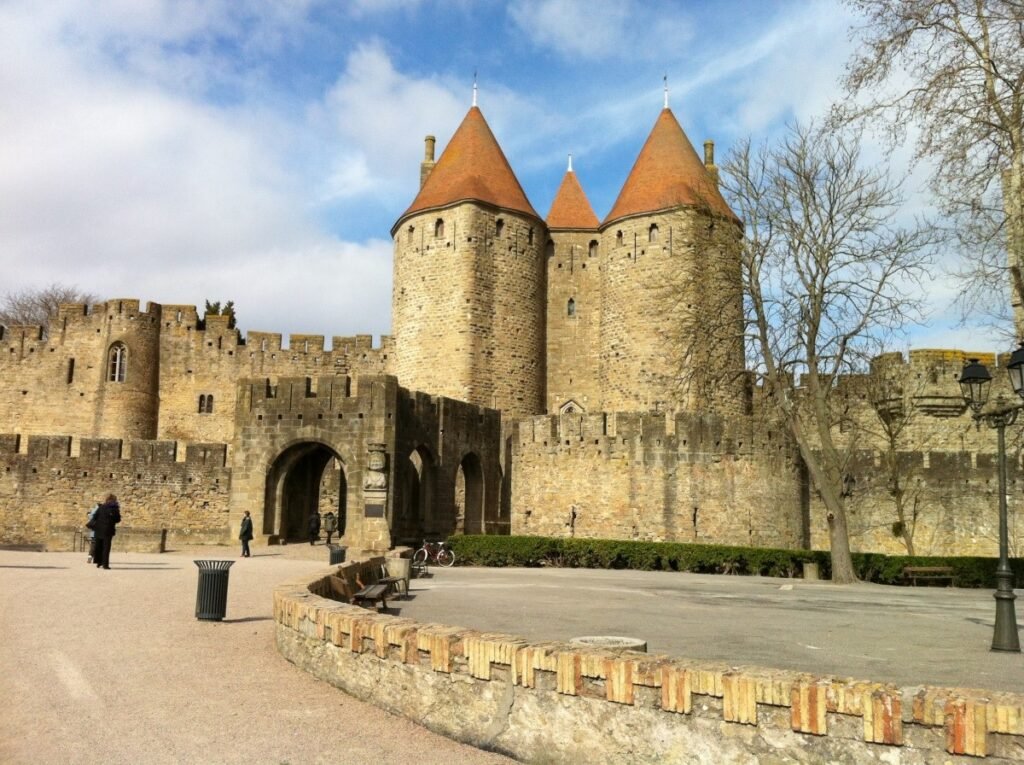
In the bowels of the city, this magnificent castle, set within the protective ramparts, dates back to Gallo-Roman times. For many years, it was the home of the Trencavel royal family.
This monument is a must-see in Carcassonne, especially as the city tour will take you past it. With its enchanting architecture and décor, the Château Comtal will plunge you back into medieval times. You’ll also enjoy panoramic views of the Pyrenees, the Montagne Noire and the Bastide Saint-Louis.
Saint-Nazaire Basilica
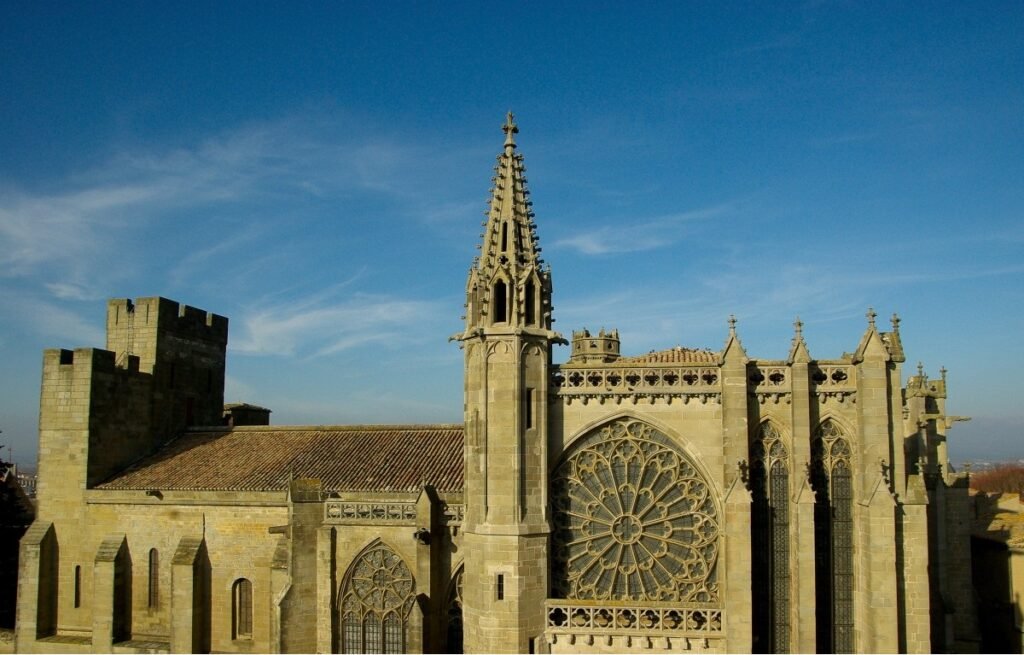
This Catholic building, dating back to 1100, is another point of interest in the fortified town. Before being given the status of a minor basilica in 1898, it was a cathedral.
Nicknamed the “Jewel of the City”, Saint-Nazaire is a harmonious blend of Romanesque and Gothic styles. It is particularly renowned for its sublime stained glass windows, considered to be the finest in the south of France.
The Pont Vieux and the Bastide Saint-Louis
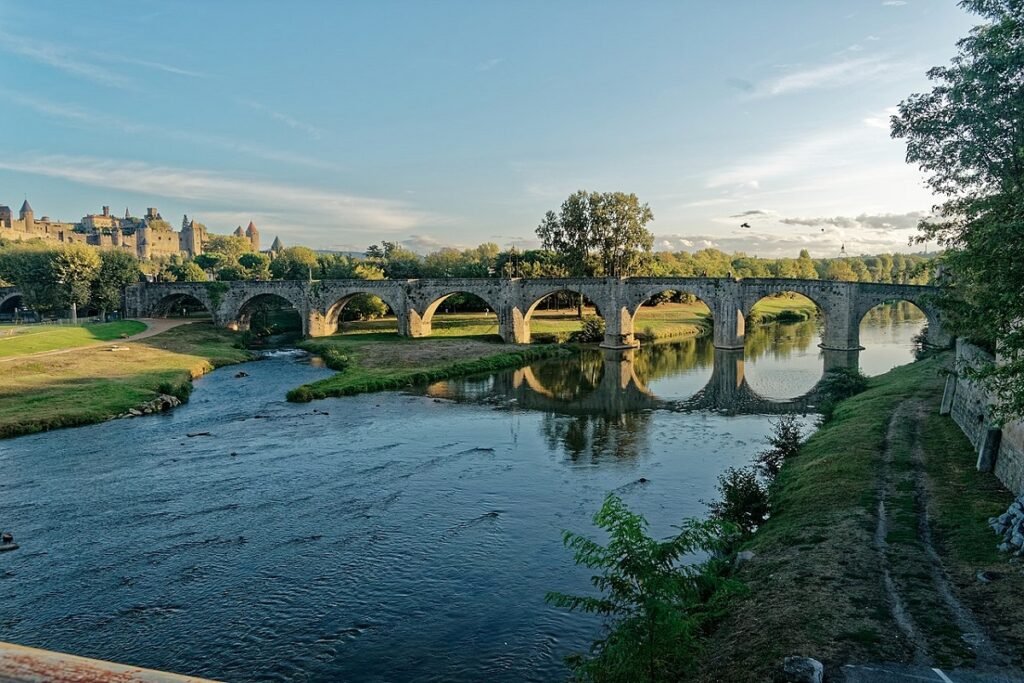
Carcassonne’s lower town is home to the fortress bridge. Once used as the only means of defence, it now provides access for tourists and offers a magnificent view of the city.
Then, as you continue on your way, you’ll come across the Bastide Saint-Louis. This building dates back to 1260 and is located on the left bank of the River Aude. Having preserved its rich architectural heritage, you can visit its many private mansions and its house of memories.
Montolieu
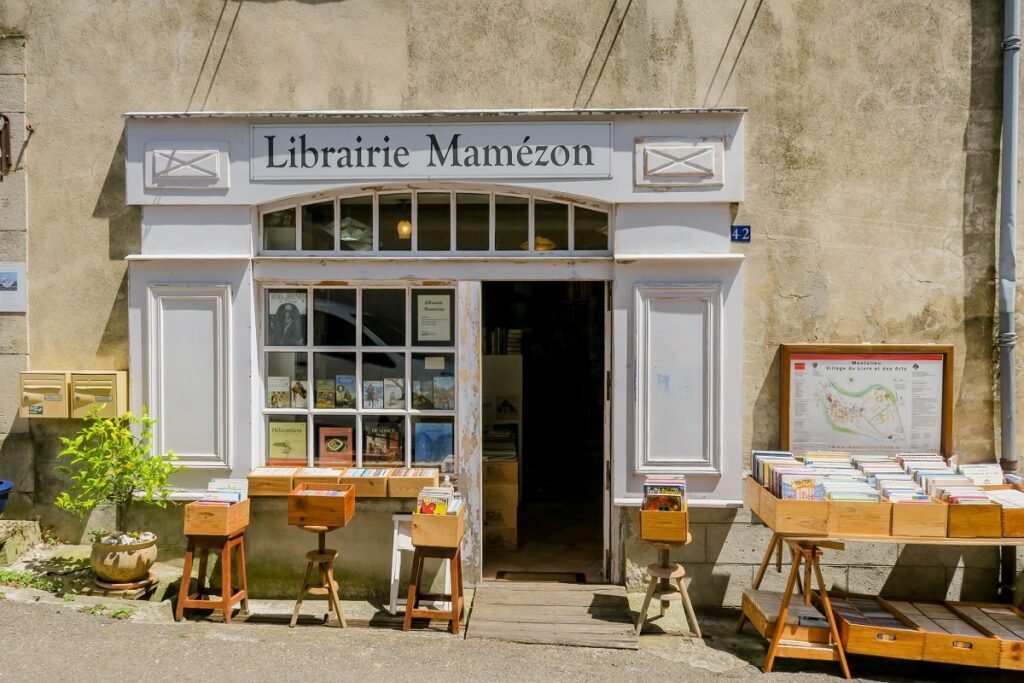
Considered the village of books and the arts, Montolieu is a charming commune to visit in and around Carcassonne.
Just 20 minutes from the city, this village perched on the Montagne Noire is a cultural haven. Everywhere you go, second-hand booksellers, artists and craftspeople will give you a warm welcome. Thousands of visitors come to stroll the aisles of this library village for a moment of escapism.
The Cérès Franco Museum
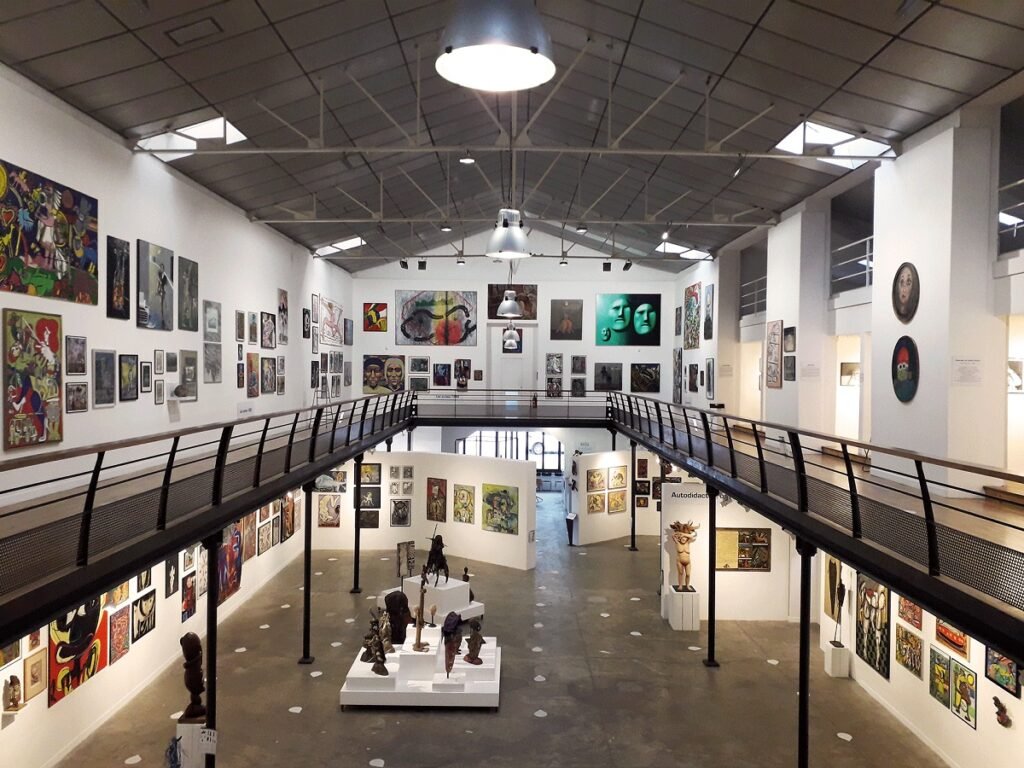
The Musée Cérès Franco in Montolieu highlights the work of this extravagant Brazilian artist.
This art gallery exhibits a range of works by the artist, as well as rare twentieth-century works in a variety of genres: art brut, Brazilian and European naive art, South American folk art, the CoBrA movement, and so on.
The Cabrespine chasm
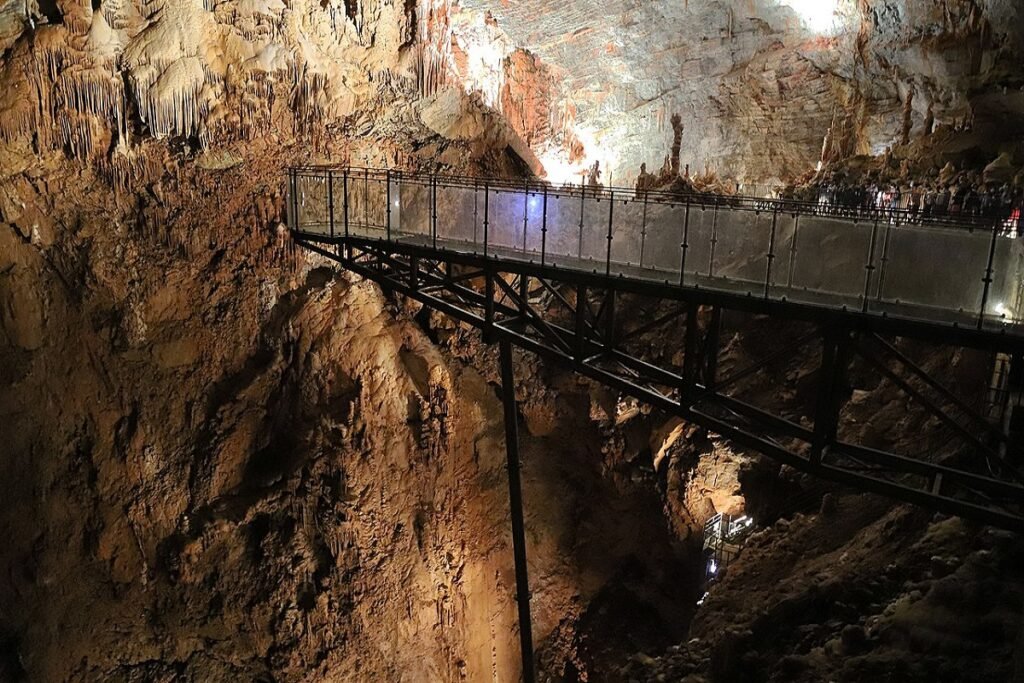
Just 25km from Carcassonne, this huge 250m-deep underground cavern is sure to thrill you.
The programme includes potholing, light shows and glass bridges to enhance your exploration of this natural ditch nestling in the heart of the Clamoux gorges. One of the most beautiful caves in Europe, the Cabrespine chasm is also a must-see in Carcassonne for its wealth of crystals.
The Limousis cave
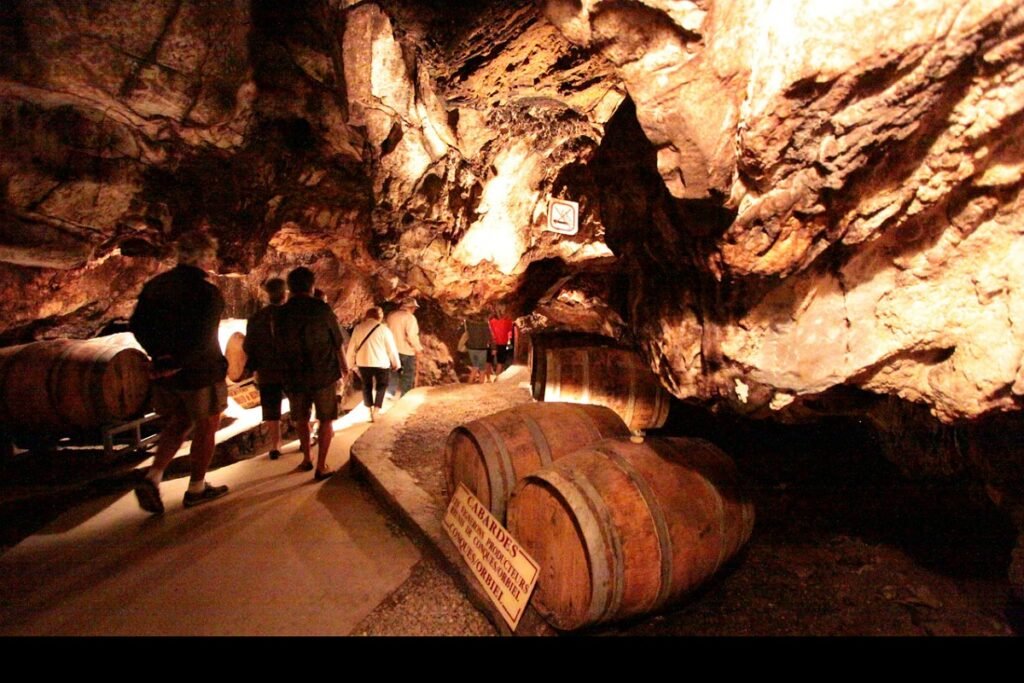
Follow a beautiful road dotted with vineyards and garrigue to reach the sublime Limousis grotto.
Its seven chambers and two lakes offer a host of attractions. These include the bridge suspended over a mirror of water and the Aragonite ‘chandelier’, a real treasure of the site. On your way out, why not sample the Améthyste cuvée wine, matured in oak barrels in the cave.
Cavayère lake
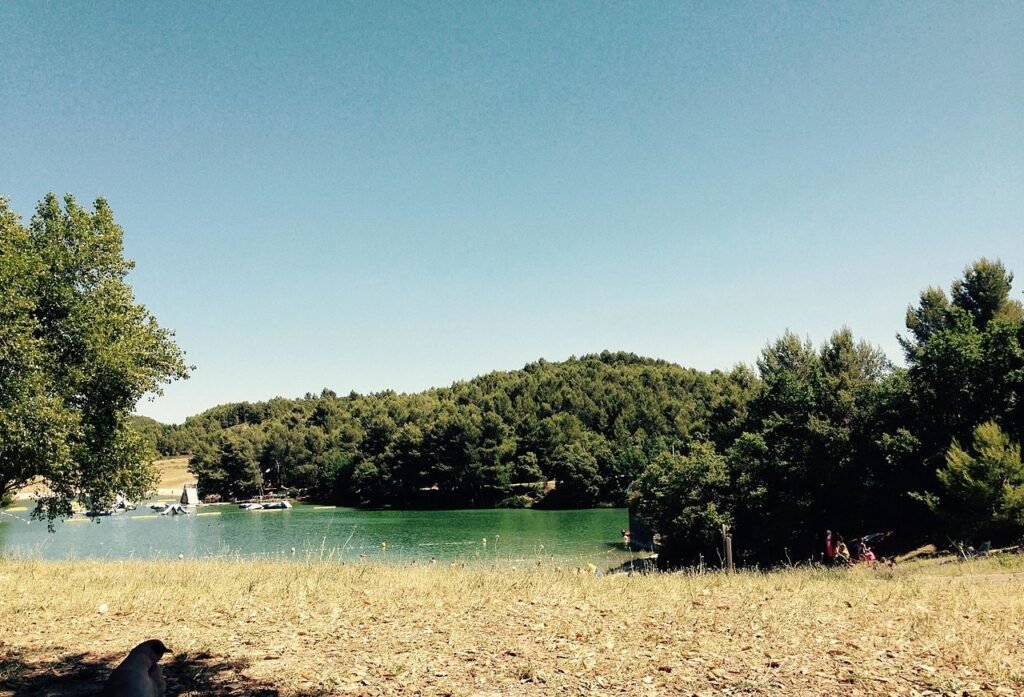
Just an hour and 45 minutes by car from the Mediterranean coastline, sea lovers might be disappointed. Luckily for them, Carcassonne has the ideal solution for those burning desires.
It only takes 5 minutes to get to Lac de Cavayère! This green water park is perfect for a family outing. For sports enthusiasts and walkers, there’s a 5km circuit around the lake with views over the whole site. But for even more excitement, the site also offers water skiing.
The Canal du Midi
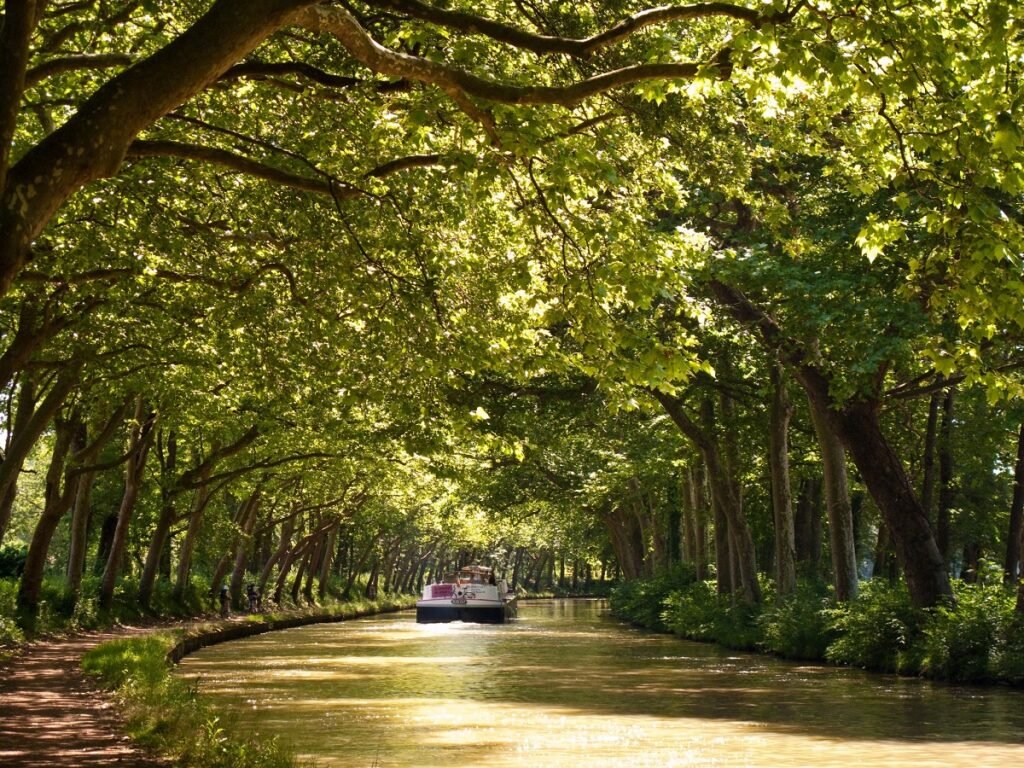
Another Unesco World Heritage site, the Canal du Midi is just the touch of tranquillity you need for a successful holiday.
Aboard a hire boat, stroll in the sunshine under the shimmering plane trees. The many towpaths also allow you to cycle from Trèbes or Carcassonne.
🔗 Read Also: 10 Best things to do in Toulouse for first time visitors
The House of Truffles
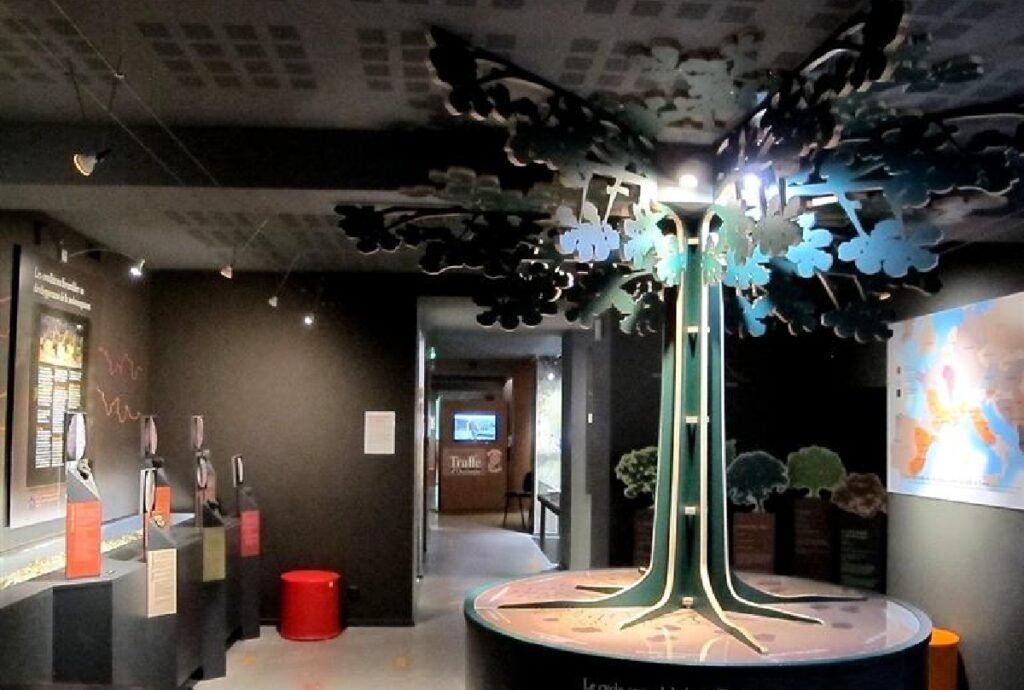
Have you ever heard of Carcassonne’s black diamond? Well, it’s not a piece of jewellery, but a renowned local product: the truffle!
And to honour this famous mushroom, a museum has been built in the heart of the triangle of Cabrespine, Trassanel and Villeneuve-Minervois. The fun, interactive approach of the exhibition will help you discover the secrets of this condiment.
The specialities of Carcassonne
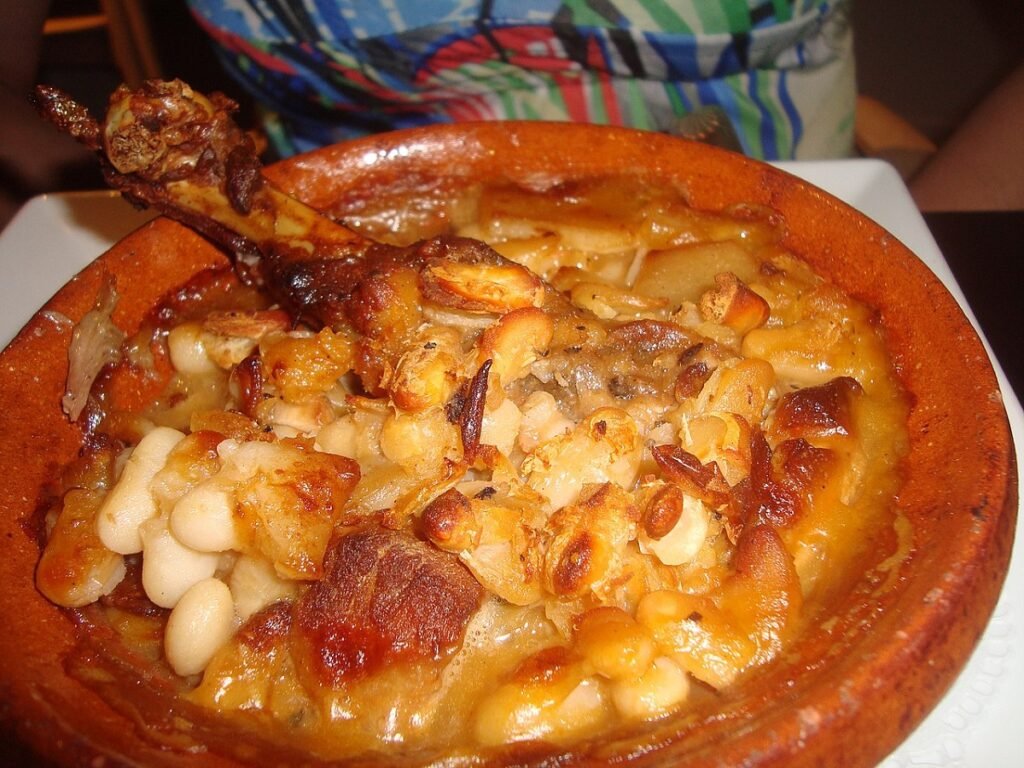
If you want to keep your figure during your stay, you’ll have to avoid the local gastronomy. But for the more gourmet and curious among you, here’s a list of Carcassonne specialities:
- Carcassonne cassoulet: This hearty dish rivals any cassoulet in the world. Its uniqueness lies in its choice of meat, with red partridge and mutton;
- Fougasse aux fritons: Made with bread dough and bacon, this delicious dish is a great starter;
- Les écus de la cité (City shields): These little chocolates are embossed with an artistic representation of the medieval city.
The town festival
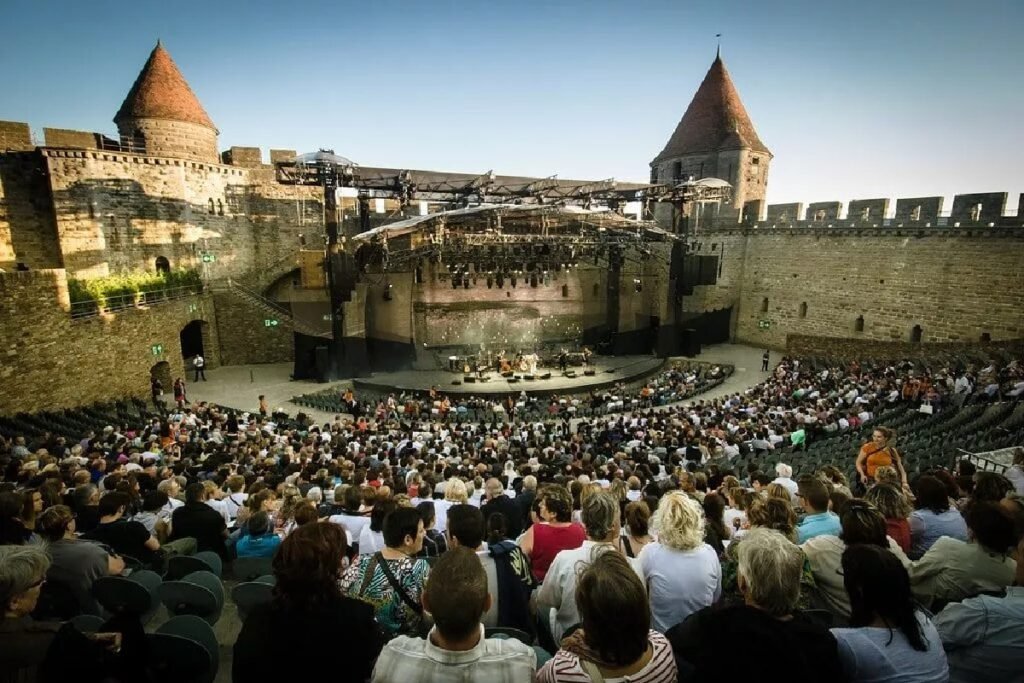
Since its creation in 2009, the city festival has been a must-see in Carcassonne. In fact, it is now one of the 10 biggest festivals in France.
Every summer, the city welcomes over 200,000 visitors from all over the world in an extraordinary setting. Throughout July, 120 shows, 80 of them entirely free, await you, featuring national and international artists.
Around Carcassonne
Pays Cathare sites
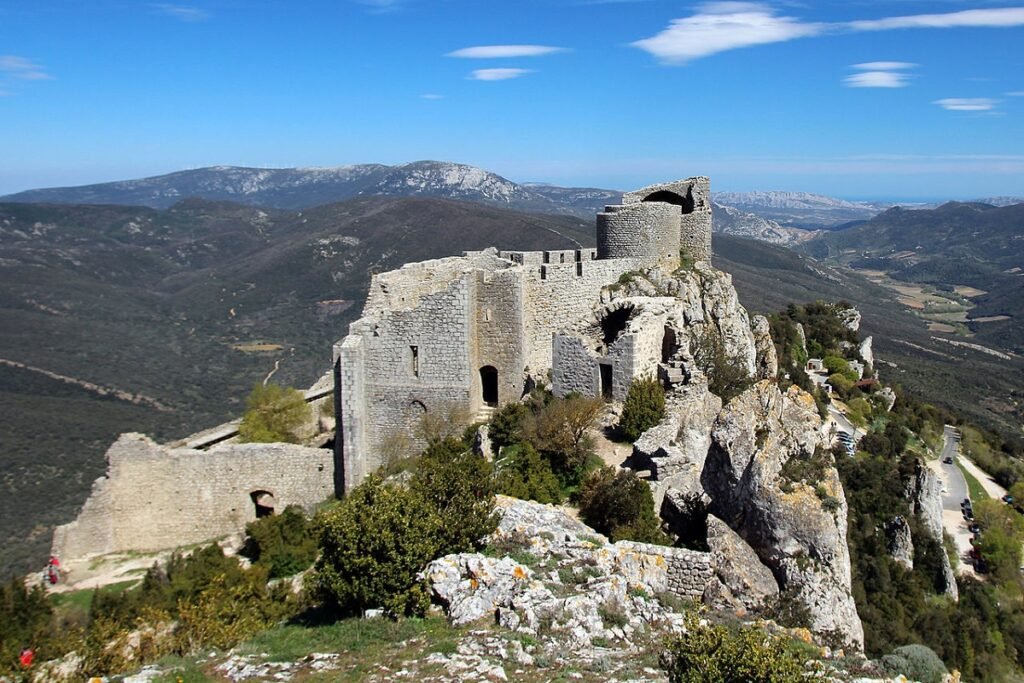
Set in exceptional natural surroundings, 22 historic sites bear witness to the traces of the Cathars in the region. Here are just a few of the highlights:
- Château de Saissac: Perched at an altitude of 450 m, this is the oldest site on the Montagne Noire. The remains of the castle dominate the Pyrenees above the Carcassonne plains;
- The castles of Lastours: Four royal fortresses make up this unique site at the top of the village of Lastours;
- Puilauren castle: At an altitude of 697 m on Mont Ardu, this strategic site is a remarkable example of the military architecture of the period;
- The fortress of Peyrepertuse: Nicknamed the “citadel of vertigo”, the fortress of Peyrepertuse stretches for around 300 m above the village of Duilhac.
The villages
The Carcassonne region also boasts a host of picturesque villages close to the Canal. Here are just a few examples to discover and visit:
- Caunes-Minervois: With its Italian village feel, this charming commune is renowned for its red marble, used in the Château de Versailles;
- Trèbes: On the banks of the Canal du Midi, this small village boasts a pretty marina, narrow streets and the church of Saint-Etienne;
- Homps: This small commune, situated between Corbières and Minervois, is worth a visit for its taste for life, leisure and wine.
The Montagne Noire
In the Cathar region, the Montagne Noire is a protected natural area. Ideal for forest walks, set off to conquer a wild and abundant nature and a remarkable heritage.
How do I get to Carcassonne?
There are several ways of getting to Carcassonne:
By car: The A10, A20 and A61 motorways will take you directly to Carcassonne. The journey takes 8 hours from Paris, 1 hour 11 minutes from Toulouse and 10 hours from Lille;
By train: The medieval city is a 30-minute walk from Carcassonne SNCF station
🚆 Check Train Schedules & Prices
By plane: Carcassonne is best served by Carcassonne-Salvaza airport. To find the flight offer best suited to your needs, use a flight comparator such as Skyscanner.
Where to stay in Carcassonne?
With its historic heritage, find accommodation for your stay that still retains the timeless atmosphere of the site. Whether you book your accommodation in the medieval city or in the town centre, a wide range of hotels and Airbnb are available. To help you, don’t hesitate to use a hotel comparison service.
But despite its cultural attractions, Carcassonne, and more particularly the Aude, is a magnificent region with some unusual places to stay. Take a trip to Montredon or one of the many surrounding villages.
The accommodation we have selected for you is based on price and quality of service.
- Le Logis
- La Maison de L’Ambassadeur
- Hôtel Le Donjon
- Mercure Carcassonne La Cité
- SOWELL HOTELS Les Chevaliers



